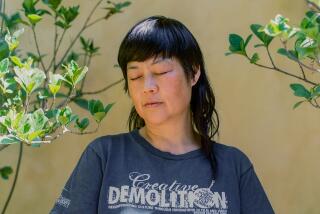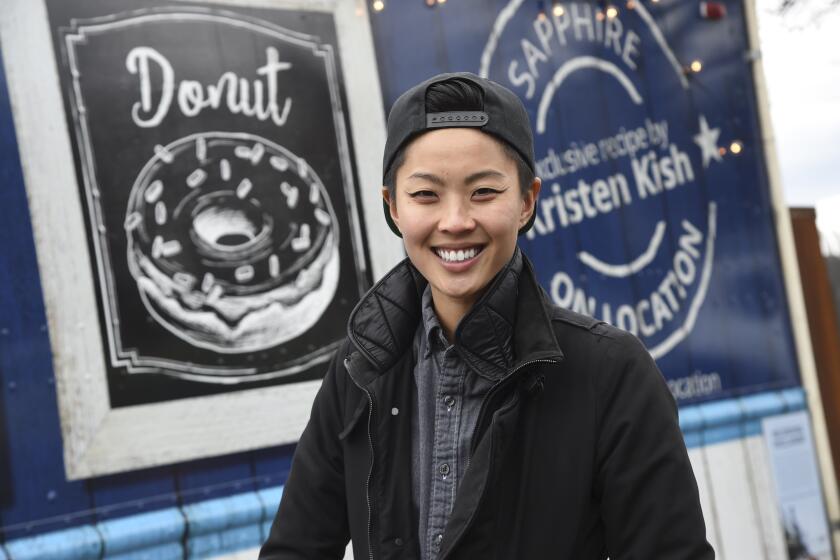A Disturbing Reminder of the Rape of Nanking
- Share via
Iris Chang grew up in Champaign-Urbana, Ill., the daughter of an academic physicist and a microbiologist.
But the stories she heard around the family dinner table were of another place and time. Her great-grandfather was a Chinese warlord who died mysteriously in the 1920s among his several concubines. Her grandmother escaped to Hong Kong in 1949 by convincing China’s new Communist rulers that her husband was being held captive there by a fictional mistress and needed rescue.
What happened in between--to her family and to China--was a little vague to her as a girl. Now it’s her obsession.
At its core is that firestorm of World War II savagery known as the Rape of Nanking. Her grandparents barely escaped it. China did not. Chang, 29, wants to remind the world what that means.
It’s not an easy obsession. She’s just published the first narrative history in English of the event--”The Rape of Nanking: The Forgotten Holocaust of World War II”--and after two years of hearing stories and looking at pictures of bayoneted babies, headless bodies and disemboweled women, she discovered her hair falling out.
“I couldn’t sleep. I couldn’t eat. Even my editor lost 10 pounds just from the stress of dealing with all this, even secondhand,” she says.
So horrific was the blood bath unleashed by the Japanese that one sickened Nazi diplomat in Nanking pleaded directly--and vainly--to Adolf Hitler for intercession.
“You think you know what evil is,” Chang said, “how bad things can be. But nothing prepared me for what I found. Even stories and films of the Holocaust.”
Unlike the Holocaust, the Rape of Nanking is barely mentioned in most histories of World War II and is absent from almost every textbook.
Few non-Chinese other than scholars and specialists remember that 60 years ago this month--four years before Pearl Harbor--Japanese Imperial Army troops ran riot in the then-capital of China, now known as Nanjing, killing in eight weeks between 260,000 and 350,000 people. Chang finds the global amnesia obscene.
An estimated 80,000 Chinese were raped during those eight weeks, including children, most of whom were then grotesquely mutilated or killed. Unlike the Nazis, who tried to hide or at least obscure the scope of their atrocities on civilians, the Japanese flaunted theirs in full view of horrified foreigners with cameras, most of whom tried futilely to stem the slaughter, even as they recorded it on film.
And unlike modern Germans, who have based their society on the bitter lessons of the Third Reich, the Japanese today still have shrines to some of their war criminals. Their failure to acknowledge and apologize for many of their atrocities in World War II still stains their relations with the rest of Asia.
Only a handful of Japanese were ever tried for the Rape of Nanking, for example, and “the Japanese government today has done its best to erase it from history,” Chang says. Officials try “to deny all this ever happened or say reports like mine are exaggerations.” But she found such “appalling and overwhelming documentation” that she faced a peculiar problem.
“The Japanese took souvenir pictures of what they did, particularly to the women. Many were forced into pornographic poses before, after or during mutilation and death. I had to omit the worst pictures from my book because I feared they might cause it to be banned from school libraries. And school libraries are where I want it most to be.”
One of the pictures she chose to omit, but which appears in another recent book, shows a handsome young Japanese soldier, standing relaxed and smiling, in a field covered with the bodies of dead Chinese. In his right hand he holds his military sword. In his left, by an ear, he holds a freshly lopped-off head.
Though her grandparents managed to escape just before the Japanese entered Nanking, Chang has found herself consumed with documenting the massacre before the last of the survivors passes away.
“I feel it’s almost like my moral responsibility,” she says, “ . . . to rescue my heritage from oblivion. And to ask how an atrocity of this magnitude could just disappear.”
In Nanjing, using her fluent Chinese, she located 10 survivors. One was a pregnant teenager when the city was sacked.
“She actually fought off the Japanese soldiers who tried to rape her,” Chang says. “They bayoneted her 37 times. She was photographed afterward at the hospital. She lost the baby, of course, but somehow lived through it. She’s nearly 80 now . . . obviously a very strong woman.”
‘I couldn’t sleep. I couldn’t eat. Even my editor lost 10 pounds just from the stress of dealing with all this, even secondhand.’
More to Read
Sign up for our Book Club newsletter
Get the latest news, events and more from the Los Angeles Times Book Club, and help us get L.A. reading and talking.
You may occasionally receive promotional content from the Los Angeles Times.










